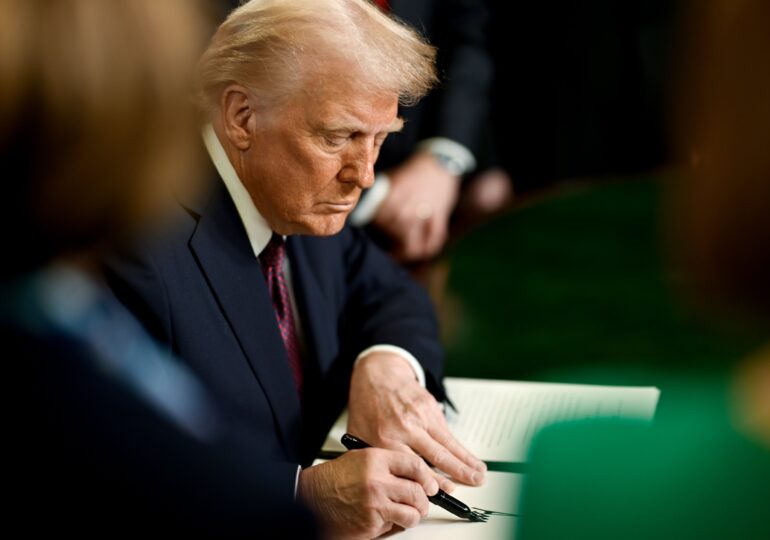The US dollar appreciated strongly on Monday, pushing other currencies to their lowest values in years after the widespread tariffs announced by American President Donald Trump triggered a trade war, Reuters reports.
On Saturday, President Donald Trump followed through on his threat of a trade war and imposed a 25% tariff on products from Canada and Mexico, as well as an additional 10% on top of existing tariffs on Chinese products, Reuters reports.
- Trump triggers trade war. He signed the order imposing customs duties in Canada, Mexico, and China. Reactions and economic effects
- Canada responds to the US with 25% tariffs, while Trudeau sends a message to Americans (Video)
On Monday, the US dollar appreciated by 0.4%, reaching a rate of 7.3462 yuan on the offshore market, after previously hitting a historical high of 7.3765 yuan. Financial markets in China are closed on Monday for the Lunar New Year, and transactions are set to resume on Wednesday.
The Mexican peso dropped to its lowest level in three years, trading at 21.2822 pesos to a dollar, while the Canadian dollar fell to 1.47755 Canadian dollars to a US dollar, a level not seen since 2003.
The euro depreciated by 2.3%, reaching 1.0125 dollars to a euro, the lowest level recorded for the single currency since November 2022, as investors prepare for the Trump administration to impose tariffs on goods from the EU.
The US dollar appreciated by 1.1% against the Swiss franc, reaching the highest level since May 2024, at 0.9210 dollars to a franc. Similarly, the British pound depreciated by 1%, trading at 1.2264 dollars, while the Japanese yen dropped to 155.59 yen to a dollar.
Meanwhile, Bitcoin dropped to $92,871, falling below the $100,000 threshold to its lowest level in the last three weeks. The price of Ether reached its lowest level since the beginning of November, trading at $2,475.25.
In response to Trump's announcement, Canada and Mexico promised immediate retaliation, while China announced it would challenge Trump's tariffs at the World Trade Organization.
"The surprise for the markets was that Mexico and Canada reacted immediately, and other markets, namely China and the EU, could follow suit, potentially leading to a dramatic reduction in global trade," says Tony Sycamore, an analyst at IG.
Additionally, analysts argue that the implementation of the new tariffs on February 4 came much faster than markets expected. "The consensus among analysts, including ours, was that American tariffs would only threaten economic prospects in the second half of 2025, after lengthy negotiations, first between the US and its main trading partners," says Mansoor Mohi-uddin, chief economist at the Bank of Singapore.

